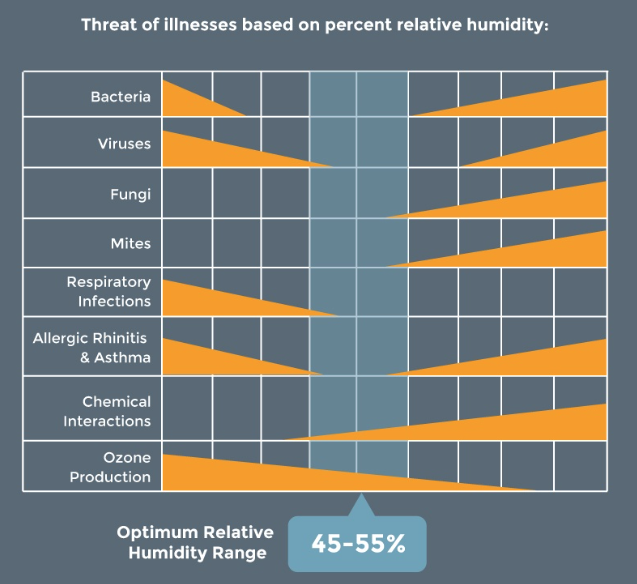Winter is in full swing. Frosty days and frigid nights bring most of life’s activities indoors where we spend nearly 90% of our time during the winter. This makes indoor air quality (IAQ) a hot topic during these cold months! Good IAQ is important because it protects our health, while poor IAQ can cause a host of ill-effects, including asthma, allergies, headaches, dizziness, and even poor sleep to name a few.
Our homes are meant to be safe havens, so we rarely think about how the place we live affects our health; but lets not sweep this idea under the rug! Studies have shown that the air we breathe indoors can have a higher concentration of contaminants than the outdoor air in big cities! Even though the type of contaminants may be different, the pollutants found indoors still pose a threat to our health. Children and seniors are most susceptible, but adults can suffer too.
Now, when you hear indoor air contaminants, you may think first about radon, carbon monoxide, and formaldehyde. Yes, these hazardous gasses are well known for being dangerous to our health, and that is one reason why they are so popular. But there are other irritants that we tend to overlook, including dust and dust mites, mold and mildew, pet hair and dander, and waste products from insects and rodents, which may be at the root cause of some of our chronic symptoms and conditions. For instance, it is estimated that 25% of the population have a genetic susceptibility to mold. These folks could develop chronic inflammation (CIRS) if exposure is sufficient (Kresser 2015). Also, the EPA estimates that of the six million children with asthma, 80% of cases are caused by allergens and 37% are caused by cockroach allergens specifically (EPA 2016).
What can you do to create great IAQ?
Maintain optimal indoor humidity levels. The chart below shows the change in indoor air contaminants as a function of humidity. As you can see, there is a narrow window of ‘optimal’ moisture levels that help keep viruses, bacterial and other contaminants at bay. In the winter, we recommend humidity towards the lower end of this range to prevent condensation buildup on cold surfaces, such as windows.

Change your furnace filters regularly. Changing air filters can make a big difference for someone with allergies or asthma. Opt for fine-mesh filters with minimum efficiency reporting values (MERVs) of 12-13 for best performance. Note that high efficiency particulate air (HEPA) filters are too dense to install in furnaces and can drastically restrict airflow through your vents. Filters with high MERV ratings come close to same performance as HEPA filters, with the exception of virus removal. Use a stand-alone or whole-house HEPA filtration system if you’re looking for added protection.
Clean your ductwork. Have your ductwork professionally cleaned if:
- There is visible mold on any part of the HVAC system or on surrounding insulation. (always replace contaminated duct insulation).
- Ducts have been infested with vermin (rodents and/or insects).
- Ducts are clogged with excessive debris and dust, or there are particles flowing out of supply vents into the home.
Properly sealing your ductwork can prevent these situations. Click here to learn more about the EPA’s recommended duct maintenance.
Seal up your leaky house. Not only do cracks and crevices let in the drafts and let out the heat, they can also serve as passageways for vermin! Sealing up the gaps can help keep these invaders and their waste products out of the house.
Your home should not make you sick. But it can. If you are concerned about your IAQ and how it could be affecting your health, give E3 INNOVATE a call. We can provide a thorough diagnostic evaluation that identifies levels of radon, CO, CO2, particulates (such as dust, mold, and other allergens), and formaldehyde. Rest easy knowing the air you breath is safe and clean.









